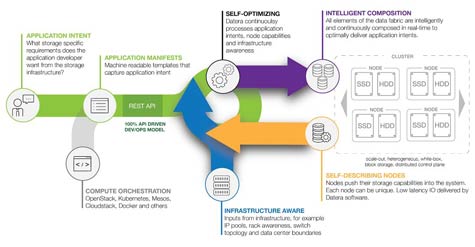One of the issues that most IT organizations have to contend with when trying to build a cloud is that most of the storage management associated with any given application workload still needs to be done manually.
To allow IT organizations to avail themselves of a more programmatic approach to attaching storage to a cloud, Datera has unveiled Datera Elastic Data Fabric, which makes use of RESTful application programming interfaces (APIs) to invoke policies to provide access to block-level storage.
Fresh off of raising $40 million in additional funding, Datera CEO Marc Fleischmann says legacy approaches to provisioning and managing storage were never designed for the dynamic I/O requirements of a cloud computing environment. Rather than trying to retrofit legacy storage systems for cloud computing environments, Fleischmann says, the time has come to employ a new approach that enables IT organizations to leverage a policy engine to allocate storage resources on demand in much the same way cloud service providers already do.
Instead of having to manually define every LUN, Fleischmann says, Datera Elastic Fabric essentially provides a software-defined layer of abstraction for managing the underlying physical storage resources. That approach will prove to be especially critical as IT organizations make the shift toward Flash storage that needs to be shared across multiple clouds, says Fleischmann.
Datera Elastic Data Fabric, which can be deployed in existing IT environments or pre-loaded on appliances provided by Datera, natively integrates via iSCSI with OpenStack, CloudStack, VMware vSphere and container orchestration platforms such as Docker, Kubernetes and Mesos. Starting configurations provide access to 150TB of capacity at speeds of 150,000 IOPS.
While storage administrators are notoriously conservative when it comes to new technologies, there’s no doubt that the way storage systems in the enterprise are deployed needs to evolve. The challenge now is figuring out how best to go about achieving that goal in cloud computing environments that need to support application workloads that fundamentally have different storage requirements than any other class of workloads that has gone before.




